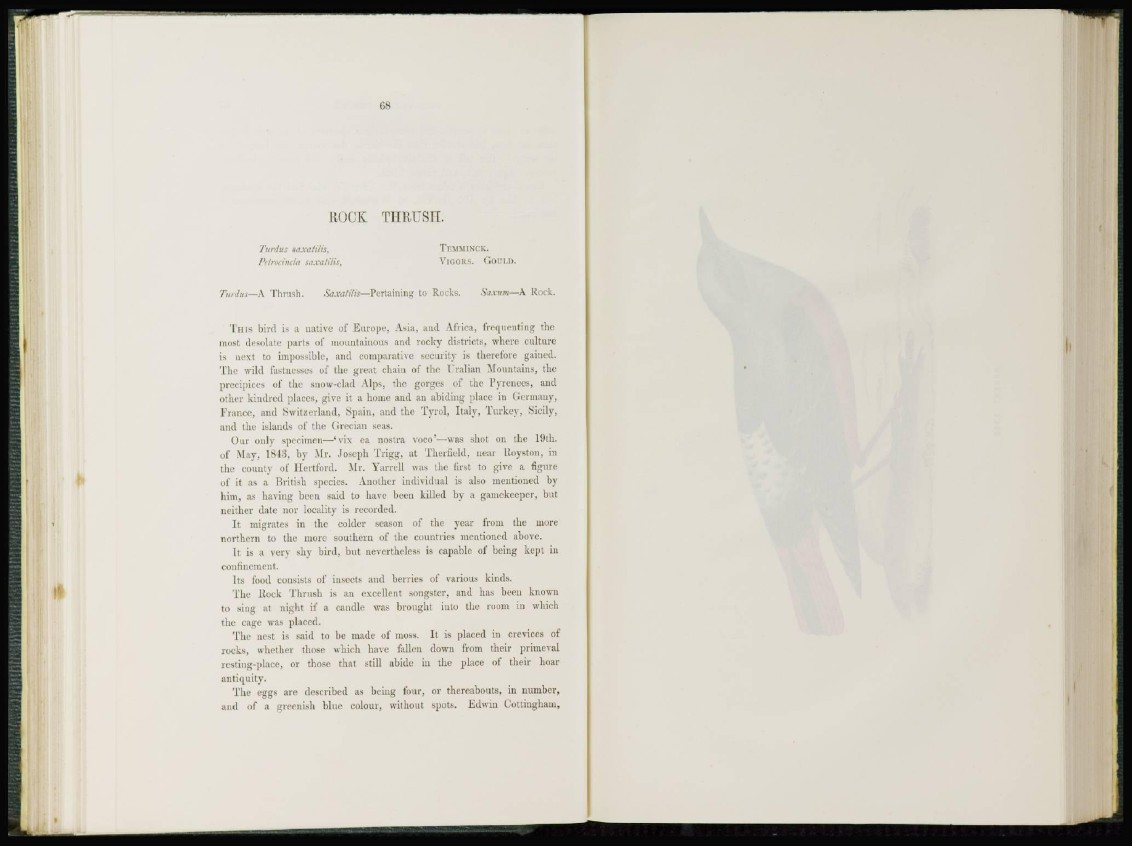
ROCK: THRUSH.
Tardus aaxa/ilis, TXMMNCK.
Petrocincla saxatilis. VIGORS. GOULD.
Tardus—A Thrush. Saxa/t'/j's—Pertaining to Rocks. Saxum—A Rock.
T i n s bird is a native of Europe, Asia, and Africa, frequenting the
mosl desolate parts of mountainous and rocky districts, where culture
is next to impossible, and comparative security is therefore gained.
The wild fastnesses of the great chain of the VTahan Mountains, the
precipices of the snow-clad Alps, the gorges of the Pyrenees, and
other kindred places, give it a home and an abiding place in Germany,
France, and Switzerland, Spain, and tin- Tyrol, Italy, Turkey, Sicily,
and the islands of the Grecian seas.
Our only specimen—'vix ea nostra voco'—was shot on the 19th.
of May, 1843, by Mr. Joseph Trigg, at Therfield, near Etoyston, in
the county of 1 [ertford. Mr. Yarrell was the first to give a figure
of it as a British species. Another individual is also mentioned by
him, as having been said to have been killed by a gamekeeper, but
neither date nor locality is recorded.
It migrates in the colder season of the year from the more
northern to the more southern of the countries mentioned above.
I t is a very shy bird, but nevertheless is capable of being kept in
confinement.
Its food consists of insects and berries of various kinds.
The Rock Thrush is an excellent .songster, and has been known
to sing at night if a candle was brought into the room in which
the cage was placed.
The nest is said to be made of moss. It is placed in crevices of
r o c k s , u nether those which have fallen down from their primeval
resting-place, or those that still abide in the place of their hoar
antiquity.
The eggs are described as being four, or thereabouts, in number,
and of a greenish blue colour, without spots. Edwin Cottiugham,